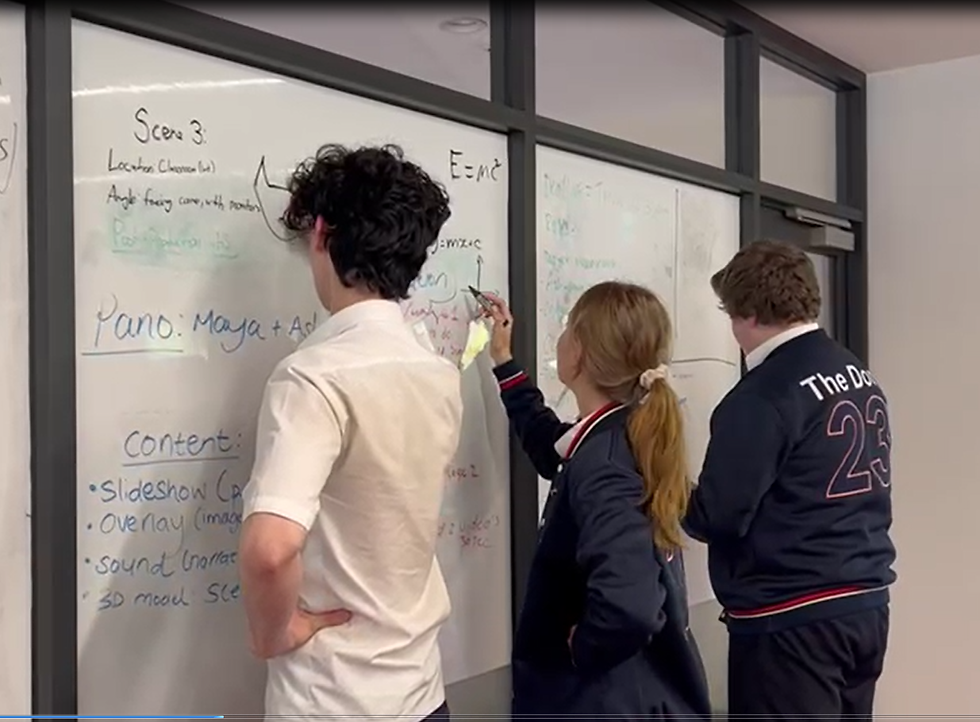Why VR is the Perfect Tool for Climate Education?
- Rosanna

- 6 days ago
- 4 min read
Empowering students to understand, empathize, and act through immersive technology.
Climate change is one of the most urgent challenges facing our planet — and educating the next generation is key to driving meaningful action.
But how do we make climate education engaging, memorable and empowering for students?
Virtual Reality (VR) offers a powerful solution. Here are 4 reasons why it’s the perfect tool for climate education in schools:
4 Reasons to use VR for Climate Education
See the Science
VR brings climate data to life. Students can explore melting glaciers, rising sea levels and deforestation in immersive environments. These experiences help them visualise the consequences of global warming in ways that static images or text cannot. A VR simulation of the Arctic shows ice loss over time, allowing students to witness the direct impact of temperature rise on polar ecosystems is much more powerful.
Feel the Impact
Immersive storytelling builds empathy. Students can walk through flood-affected villages, hear voices of displaced communities and understand the human cost of climate change. This emotional connection deepens engagement and encourages critical thinking. A VR journey through a Pacific Island community reveals how rising seas threaten homes, culture and livelihoods — sparking real empathy and classroom discussions on climate justice.
Create Change
With tools like VRCreate, students become active participants in climate advocacy. They design their own VR experiences aligned with the UN Sustainable Development Goals (SDGs), combining research, storytelling and digital creativity. One example is Students build a VR campaign highlighting the effects of deforestation in the Amazon, complete with interactive scenes and calls to action.
Explore Careers
VR opens doors to future-focused careers in sustainability, climate science and immersive technology. Students discover how their interests in science, storytelling or design can lead to meaningful work in industries that address global challenges. A VR program introduces job roles like renewable energy engineer, climate data analyst and XR experience designer. This helps students connect classroom learning to real-world opportunities.
Practical ideas for how teachers can apply VR in the classroom for climate education.

Curriculum-Aligned VR Lessons
Immersive Learning = Deeper Understanding
Integrate VR modules into Geography, Science or History units. Align experiences with Australian Curriculum outcomes (e.g., sustainability, ecosystems, human impact).
Here's an example for Science: On VR headsets, students explore the Great Barrier Reef in a VR module, witnessing coral bleaching and ocean acidification firsthand. Interactive hotspots and narration help them understand the science behind these changes. Then, using the VR editor, students can create and share their own interpretations. Students can present their VR experiences during sustainability week!
Student-Created VR Advocacy Projects
Emotional connection drives motivation to act
Students don’t just learn facts — they feel the urgency to act. Teachers can run a VR advocacy program where students explore the UN Sustainable Development Goals (SDGs). Here's an example: Students deep dive into one of the goals and explore ways to help. They collaborate to design a storyboard for their own campaigns using a simple VR framework of 4 scenes: Current Situation → What Needs to Change → What Good Looks Like → What We Can Do. Using a VR editor, students build immersive experiences that highlight climate issues and solutions. They can share their campaigns by:
Presenting them at school assemblies or sustainability events
Uploading to a VR gallery or showcase
Sharing with local councils or community groups
Submitting to student innovation competitions or SDG challenges
This turns climate learning into action and gives students a voice in shaping a better future.

Field Trips to Climate Hotspots
360° VR Climate Experiences for Students
See below a list of 360 VR experiences that are thought-provoking. Teachers can connect headsets to YouTube VR to view these experiences.

Coral Bleaching & Ocean Acidification A 360 Virtual Reality Film Exploring Climate Change Across the World
Rising Sea Levels in Fiji Our Home, Our People – World Bank
Global Climate Impacts Simulation What Climate Change Will Look Like on Earth | 360 VR
Carbon Footprint Awareness UN Environment Programme – Virtual Reality/360 Video Watch here
Measurable engaging outcomes
Teachers won’t get left behind - build digital skills while creating immersive, curriculum-aligned learning.
Educators can design full VR lessons, quizzes, scavenger hunts and assessments that meet literacy, numeracy and engagement benchmarks.
Student Outcomes:
Improved attendance during immersive learning sessions
Texts, storyboards and digital products assessed against literacy & numeracy standards
Teamwork and collaboration observed and evaluated during group VR projects
Extended concentration spans tracked through time spent on VR creation
Student reflection surveys used to measure confidence, capability, and engagement

Cross-Curricular Projects
Teachers can integrate VR in STEM and Indigenous perspectives
Example: Students research climate resilience and Indigenous land management practices. They then write and narrate a VR story combining:
English: Persuasive storytelling and scriptwriting
Science: Climate data and environmental impact
Technology: VR design and coding
Maths: Data analysis and spatial planning
The final product is a student-created VR experience that showcases both scientific understanding and cultural respect — aligned with curriculum outcomes and perspectives.
This is a Stage 2 Student example below

(Image author: Alison Perosin, Innovation Teacher at OLPS)
Conclusion: Turning Climate Learning into Action
Virtual Reality transforms climate education from passive learning into active engagement. By immersing students in real-world challenges and empowering them to create solutions, VR fosters deeper understanding, empathy and advocacy. Whether exploring coral reefs, designing campaigns or connecting with Indigenous knowledge, students gain the skills and confidence to shape a more sustainable future.
One immersive experience at a time




Comments